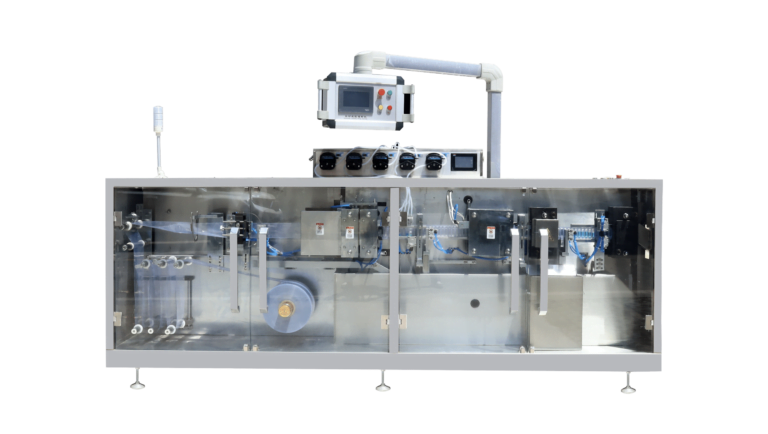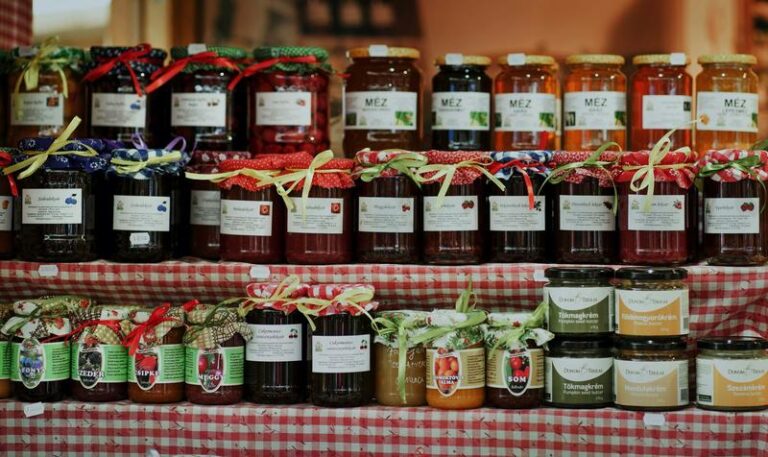ไม่แน่ใจว่าจะเลือกแบบซองหรือแท่งดี? ใจเย็นๆ หน่อย ถ้าจำเป็น! ให้ฉันช่วยคุณตรงนี้
ทั้งซองและซองบรรจุจะมีคุณสมบัติพิเศษต่างๆ กัน คุณต้องตัดสินใจว่าแบบใดเหมาะกับการใช้งานของคุณ สำหรับการเก็บยาหรือชาหรือกาแฟสำเร็จรูป ซองกาแฟแบบซองจะเหมาะที่สุด อย่างไรก็ตาม สำหรับอาหารและเครื่องสำอาง ซองกาแฟแบบซองจะเหมาะที่สุด
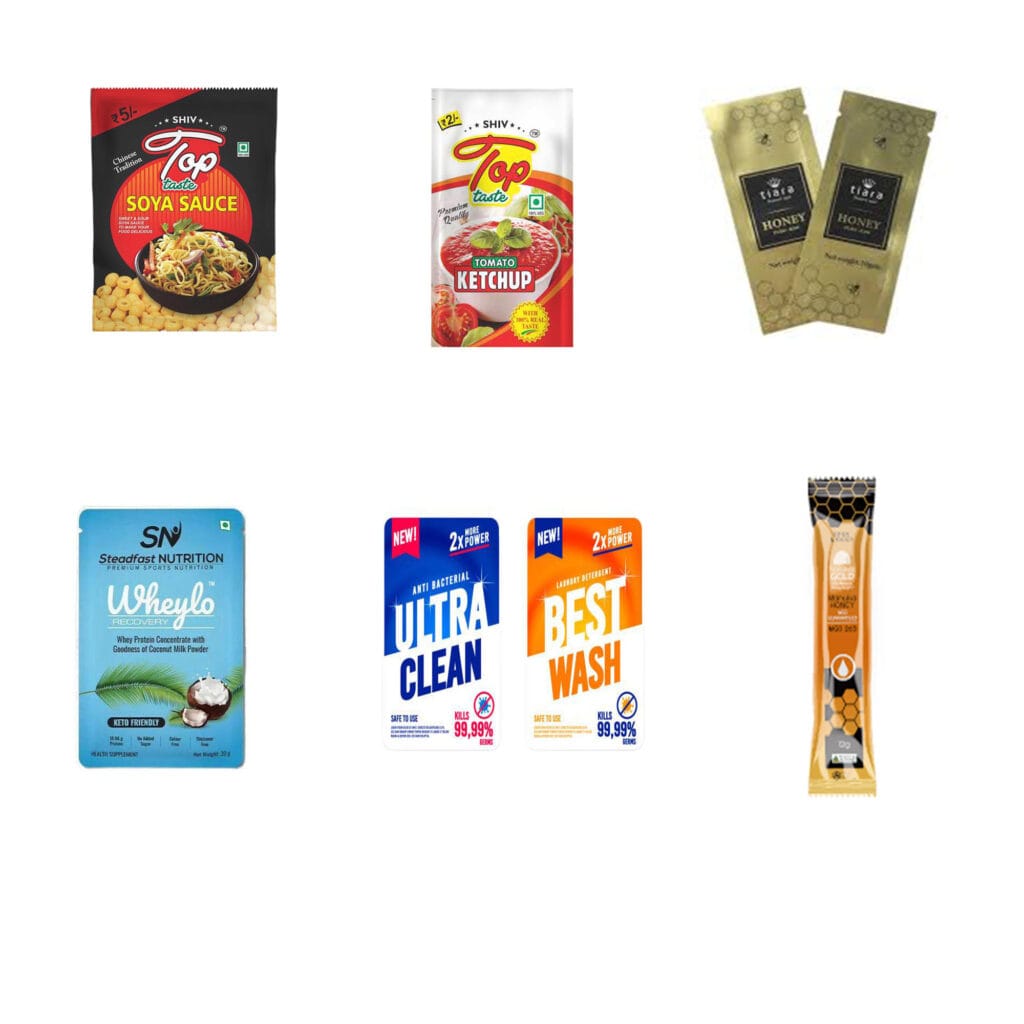
ในบล็อกนี้เราจะกล่าวถึงความแตกต่างระหว่างบรรจุภัณฑ์แบบแท่งและแบบซองก่อน จากนั้นจะมาดูข้อดีของการรวมบรรจุภัณฑ์ทั้งสองแบบนี้เข้าไว้ในกระบวนการผลิตของคุณ และนำมาประยุกต์ใช้กับบรรจุภัณฑ์แบบเสิร์ฟครั้งเดียวของคุณเอง
ทำความเข้าใจระหว่าง Stick Pack กับ Sachet Pack
ติดแพ็คมักเรียกกันว่าซองแท่ง เป็นบรรจุภัณฑ์โดสเดียวที่ได้รับความนิยมมากที่สุดในตลาด บรรจุภัณฑ์ซองแท่งมักใช้สำหรับผงเครื่องดื่มสำหรับนักกีฬาหรือน้ำตาล กาแฟสำเร็จรูป และผลิตภัณฑ์ผงอื่นๆ ขนาดเล็กและรูปร่างบางทำให้แตกต่างจากซองแท่งอื่นๆ ซองโดสเดียวเหล่านี้เหมาะสำหรับ ผงชนิดใดก็ได้ และมักไม่นำมาใช้บรรจุภัณฑ์ ของเหลวเจลหรือกึ่งของแข็ง บรรจุภัณฑ์แบบแท่งสามารถพกพาได้ง่ายและเป็นที่นิยมในหมู่ผู้ผลิตเนื่องจากสะดวก
บรรจุภัณฑ์แบบแท่งมีลักษณะแคบ ยาว และมีจำหน่ายเป็นโดสเดียว บรรจุภัณฑ์ประเภทนี้สามารถใช้เก็บผง น้ำตาล เม็ด และอื่นๆ ได้ นอกจากนี้ บรรจุภัณฑ์ยังปิดผนึกทั้งสองด้านและเคลื่อนย้ายได้ง่าย
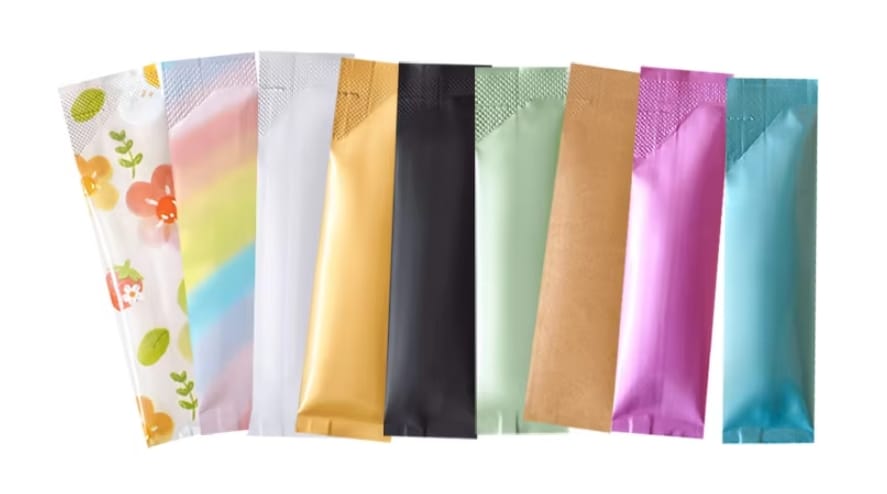
บรรจุภัณฑ์ซองในทางกลับกัน มักจะถูกกำหนดให้ใช้กับของเหลว ผลิตภัณฑ์นม หรืออาหารบางประเภท เช่น ซอสแอปเปิลหรืออาหารเด็ก ภาชนะบรรจุแบบซองมักจะปิดผนึกไว้สามหรือสี่ด้าน และกระบวนการปิดผนึกทั้งสี่ด้านทำให้ปิดผนึกได้แข็งแรงมากซึ่งจะไม่แตกหักระหว่างการขนส่งหรือการจัดเก็บ
ไม่ว่าความต้องการส่วนบุคคลของคุณจะเป็นอย่างไร โซลูชันบรรจุภัณฑ์ทั้งสองแบบก็เหมาะอย่างยิ่งสำหรับผู้บริโภคที่มีชีวิตยุ่งวุ่นวาย อัตราการผลิตของโซลูชันเหล่านี้รวดเร็ว และต้องการอุปกรณ์บรรจุภัณฑ์เพียงเล็กน้อย
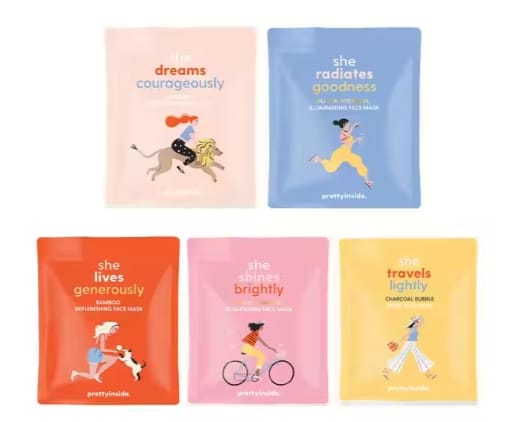
ประโยชน์ของการบรรจุซองและซองแบบแท่ง
รูปแบบบรรจุภัณฑ์แบบนี้เหมาะสำหรับผง อาหารและผลิตภัณฑ์ยา ไม่ว่าคุณจะใช้ซองหรือบรรจุภัณฑ์แบบแท่ง ต่อไปนี้คือข้อดีหลักบางประการในการใช้บรรจุภัณฑ์แบบซองหรือแบบแท่ง:
- แพ็คแบบแท่งเหมาะอย่างยิ่งสำหรับผู้บริโภคที่ต้องเดินทางบ่อย
- อุตสาหกรรมยาสามารถกำหนดปริมาณยาและอาหารเสริมชนิดผงได้อย่างง่ายดาย
- การบรรจุในแต่ละซองหรือแท่งต้องใช้อุปกรณ์เพียงเล็กน้อย
- สามารถนำไปใช้กับผลิตภัณฑ์ของเหลว ผง และอาหารได้
- พวกเขาสามารถทำงานด้วยงบประมาณอุปกรณ์บรรจุภัณฑ์เพียงเล็กน้อย
- มีน้ำหนักเบาจึงจัดเก็บและขนส่งได้ง่าย
- บรรจุภัณฑ์คุณภาพสูงทำให้ผู้บริโภคสะดวกสบาย – ไม่ต้องใช้เครื่องบรรจุแบบปริมาตร สว่าน หรือของเหลว – ซองแต่ละซองช่วยป้องกันไม่ให้ผลิตภัณฑ์ที่มีฝุ่นเกาะมากขึ้นระหว่างการขนส่งและการจัดเก็บ
ความแตกต่างระหว่างแพ็คแบบแท่งและแพ็คแบบซองคืออะไร?
บรรจุภัณฑ์แบบซองและแบบแท่งแตกต่างกันแม้ว่าจะมีความเรียบง่ายและสะดวกสบาย ลองดูสิ
ประเภทของบรรจุภัณฑ์
บรรจุภัณฑ์ของแต่ละซองจะแตกต่างกันออกไป ท่อรูปสี่เหลี่ยมผืนผ้ายาวและบางเรียกว่าแพ็คสติ๊ก มักทำจากพลาสติกหรือวัสดุอื่นๆ ชั้นเดียวหรือหลายชั้น นอกจากนี้ยังมีก้นและด้านปิดผนึกสองด้านอยู่ด้านบน มีแถบฉีกเพื่อเปิดได้ง่าย
ซองยาแบบซองมีหลากหลายรูปแบบ ทำจากฟอยล์และวัสดุอื่น ๆ ปิดผนึกสามหรือสี่ด้านและมีขนาดใหญ่กว่าซองแบบแท่ง สามารถเปิดซองยาได้โดยการฉีกเป็นชิ้นเล็กชิ้นน้อย
คืน
ความจุบ่งชี้ว่าบรรจุภัณฑ์ทั้งสองแบบนี้เก็บผลิตภัณฑ์ได้ในปริมาณที่แตกต่างกัน ตัวอย่างเช่น บรรจุภัณฑ์แบบซองมักจะมีของเหลวน้อยกว่าแบบซอง เช่น 1 ถึง 60 มิลลิลิตร ส่วนบรรจุภัณฑ์แบบผงสามารถประหยัดได้หลายกรัม ดังนั้นคุณจึงสามารถเก็บผลิตภัณฑ์เสริมอาหาร เครื่องดื่ม และชาสำเร็จรูปไว้ในบรรจุภัณฑ์แบบซองได้
ซองบรรจุอาหารออกแบบมาเพื่อบรรจุอาหารได้มากกว่าแบบซอง เช่น ผงอาหารเพียงไม่กี่กรัมหรือของเหลว 1-10 มิลลิลิตร ความจุนี้ช่วยให้คุณบรรจุอาหารประเภทน้ำตาล ครีมสำหรับของหวาน เครื่องปรุงรส มอยส์เจอร์ไรเซอร์ แชมพู เป็นต้น
ค่าใช้จ่าย
ซองบรรจุมีราคาถูกกว่าซองบรรจุแบบแท่งเนื่องจากมีความยืดหยุ่นและหาซื้อได้ง่ายกว่าในจำนวนที่น้อยกว่า ในขณะเดียวกัน ซองบรรจุแบบแท่งมีความจำเป็นสำหรับเครื่องจักรการผลิตและมีรูปร่างเฉพาะ
อินดัสท
อาหาร ยา สารเคมีในบ้าน ฯลฯ ล้วนใช้ซองและซองยาแบบแท่ง อย่างไรก็ตาม ซองยาแบบแท่งยังคงถูกนำไปใช้งานในทางการแพทย์เป็นส่วนใหญ่ ทั้งยาเม็ด ของเหลว และผง ล้วนถูกนำไปใช้งานที่นั่น ซองยาแบบแท่งเหล่านี้ยังใช้ในการบรรจุชาและ กาแฟ เพื่อบรรจุแต่ละชนิดหลายๆแบบ
ในทางกลับกัน ซองพลาสติกมักถูกนำไปใช้งานในภาคส่วนอาหารและสารเคมี โดยทั่วไปแล้ว ซองพลาสติกมักถูกใช้สำหรับความต้องการเฉพาะครั้ง เช่น แชมพูและผงซักฟอก
เครื่องบรรจุซอง VS เครื่องบรรจุแท่ง
ต่อไปมาดูเครื่องบรรจุซองและเครื่องบรรจุซองโดยเฉพาะกันอย่างใกล้ชิด
เครื่องบรรจุไม้
ความแม่นยำเป็นสิ่งสำคัญสำหรับการผลิตบรรจุภัณฑ์ไม้ โดยเครื่องจักรหลักๆ 2 ประเภทจะตอบสนองความต้องการดังกล่าว:
- เครื่องบรรจุกล่องแบบเลนเดียว
เครื่องบรรจุไม้แบบเลนเดียวมีแม่พิมพ์ขึ้นรูปหนึ่งชุดและตัวป้อนหนึ่งชุด ทำให้สามารถบรรจุผลิตภัณฑ์ในเลนเดียวได้ กระบวนการเริ่มต้นด้วยการบรรจุผลิตภัณฑ์ลงในแพ็คไม้ จากนั้นจึงปิดผนึก ตัด และขั้นตอนอื่นๆ เพื่อสร้างแพ็คไม้แถวเดียว
- เครื่องบรรจุไม้หลายเลน
เครื่องบรรจุไม้แบบหลายเลนสามารถบรรจุไม้ได้หลายเลนพร้อมกัน โดยทั่วไปคือสองเลน สี่เลน หรือแปดเลน เครื่องนี้ใช้ตัวป้อนและแม่พิมพ์แยกกันเพื่อกระจายวัสดุลงในถุงแยกกัน จากนั้นจึงดำเนินการปิดผนึก ตัด และกระบวนการอื่นๆ เพื่อผลิตไม้บรรจุหลายแถวพร้อมกัน
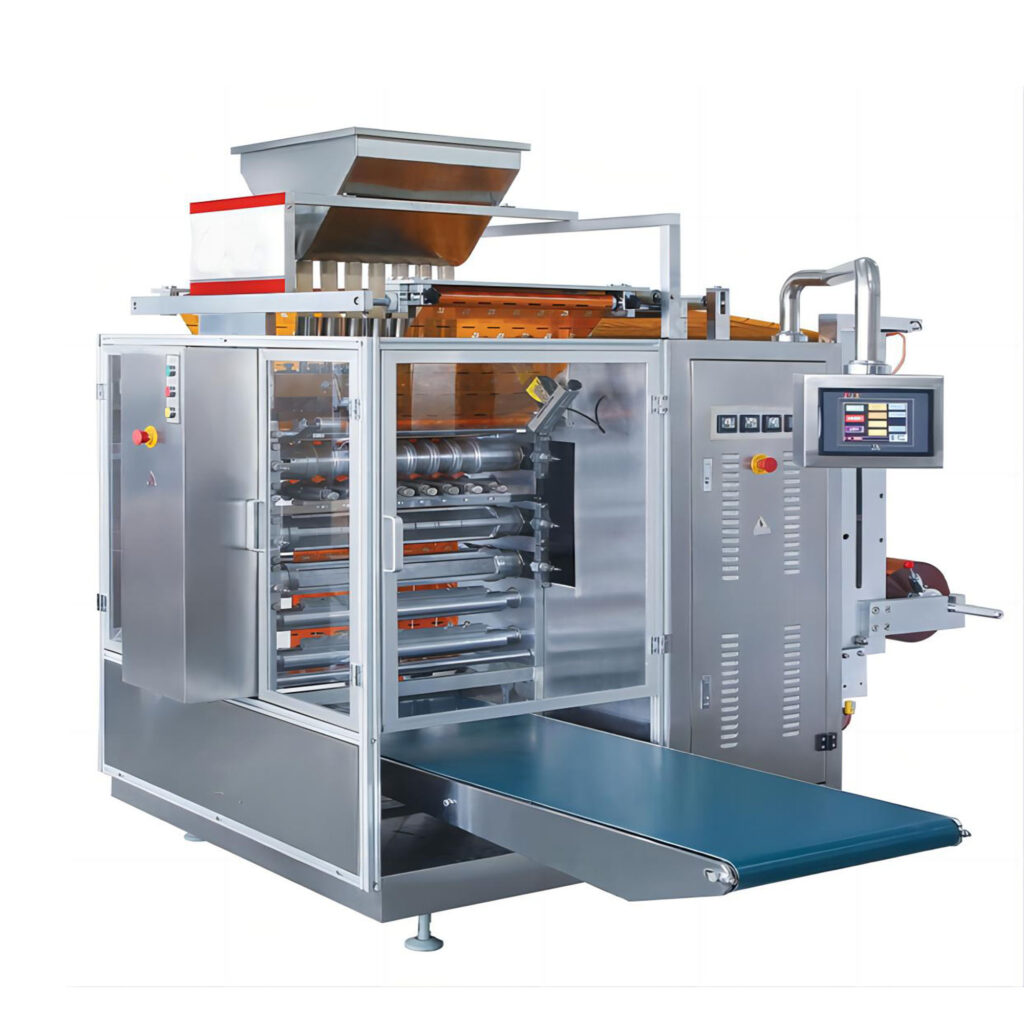
เครื่องบรรจุซอง
เครื่องบรรจุซองได้รับการออกแบบมาเพื่อบรรจุผลิตภัณฑ์ต่างๆ ลงในถุงซองแบนกว้าง โดยสามารถบรรจุผลิตภัณฑ์ต่างๆ เช่น ผง แคปซูล และเครื่องสำอางได้ มีสองประเภทหลักๆ:
เครื่องบรรจุซองแนวตั้งเป็นเครื่องบรรจุซองอเนกประสงค์ที่สามารถบรรจุของแข็ง ของเหลว เม็ด และอื่นๆ ได้ โดยเครื่องจะทำงานในแนวตั้ง โดยบรรจุ ปิดผนึก และติดฉลากถุงบรรจุภัณฑ์ในแนวตั้ง นอกจากนี้ เครื่องยังสามารถนับ ตรวจจับ และชั่งน้ำหนักวัสดุต่างๆ ในระหว่างกระบวนการบรรจุได้โดยอัตโนมัติ
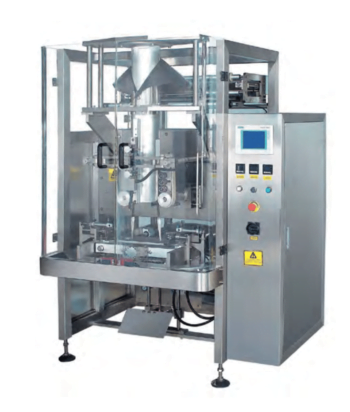
เครื่องบรรจุซองแนวนอนมีความเร็วที่เร็วกว่ารุ่นแนวตั้ง โดยสามารถบรรจุผลิตภัณฑ์ต่างๆ ในถุงที่มีรูปร่างและขนาดต่างๆ กันได้ และสามารถใช้ได้กับทั้งกระดาษและพลาสติก ด้วยคุณสมบัติการควบคุมขั้นสูงและระบบอัตโนมัติ เครื่องเหล่านี้จึงสามารถบรรจุผลิตภัณฑ์และซีลถุงในแนวนอนได้ จึงให้โซลูชันการบรรจุที่ยืดหยุ่นได้
ซองแบบแท่งเทียบกับซองแบบซอง: ความแตกต่างอย่างรวดเร็ว
| คุณสมบัติ | สติ๊กแพ็ค | ซอง |
|---|---|---|
| ความแม่นยำของปริมาณยา | ให้ปริมาณยาที่แม่นยำ | แม่นยำน้อยลง โดยเฉพาะผง |
| ความสามารถในการพกพา | พกพาสะดวกและสะดวกสบาย | โดยทั่วไปสามารถพกพาได้ แต่สามารถมีขนาดใหญ่ขึ้นได้ |
| ค่าใช้จ่าย | ต้นทุนการผลิตที่สูงขึ้น | ประหยัดต้นทุนการผลิตมากขึ้น |
| ขยะบรรจุภัณฑ์ | สร้างขยะน้อยลง | มีแนวโน้มทำให้เกิดขยะบรรจุภัณฑ์เพิ่มมากขึ้น |
| สะดวกในการใช้ | เปิดและใช้งานง่าย | เปิดง่ายแต่จะเลอะเทอะได้ |
| ความเก่งกาจ | จำกัดเฉพาะผลิตภัณฑ์บางประเภทเท่านั้น | ใช้งานได้หลากหลายกับผลิตภัณฑ์หลากหลายประเภท |
| การใช้งาน | ยา เครื่องดื่มชูกำลัง อาหารเสริมชนิดผง | เครื่องปรุง เครื่องสำอาง ของใช้ครั้งเดียวทิ้ง |
| ความต้องการของผู้บริโภค | เน้นการบริโภคระหว่างเดินทาง | เหมาะสำหรับใช้ในครัวเรือนและใช้งานหลากหลาย |
| ผลกระทบต่อสิ่งแวดล้อม | โดยทั่วไปจะยั่งยืนมากขึ้นเนื่องจากใช้วัสดุน้อยลง | ความยั่งยืนลดลงเนื่องจากมีขยะมากขึ้น |
เปรียบเทียบบรรจุภัณฑ์แบบซองกับแบบแท่ง เลือกแบบไหนดี?
การใช้งานและความเข้ากันได้ของผลิตภัณฑ์
เมื่อต้องตัดสินใจเลือกบรรจุภัณฑ์แบบซองหรือแบบแท่ง ให้พิจารณาถึงลักษณะของผลิตภัณฑ์ ซองเป็นบรรจุภัณฑ์อเนกประสงค์ที่บรรจุผลิตภัณฑ์ได้หลากหลายประเภท เช่น ของเหลว ครีม ผง และแม้แต่เจล การออกแบบแบบแบนทำให้บรรจุได้ปริมาณมากกว่าแบบแท่ง จึงเหมาะสำหรับผลิตภัณฑ์ เช่น เครื่องปรุง โลชั่น และแชมพู ซองยังเหมาะสำหรับผลิตภัณฑ์ยา เช่น เม็ดยาและแคปซูลอีกด้วย
อย่างไรก็ตาม บรรจุภัณฑ์แบบแท่งมักใช้กับผลิตภัณฑ์แห้ง เช่น น้ำตาล กาแฟสำเร็จรูป อาหารเสริมผง และผงเครื่องดื่มชูกำลัง รูปร่างที่แคบทำให้ไม่เหมาะกับผลิตภัณฑ์ที่เป็นของเหลวหรือกึ่งของแข็ง แม้ว่าจะใช้บรรจุผลิตภัณฑ์ที่เป็นของเหลวในปริมาณเล็กน้อยได้ก็ตาม
เคล็ดลับด่วน: หากผลิตภัณฑ์ของคุณต้องการการกำหนดปริมาณที่แม่นยำหรือประกอบด้วยของเหลว ซองบรรจุจะเป็นทางเลือกที่ดีกว่า สำหรับผลิตภัณฑ์ที่เป็นผงหรือเม็ด ซองบรรจุแบบแท่งจะเป็นทางเลือกที่สะดวกกว่า
การพิจารณาต้นทุน
ต้นทุนมีบทบาทสำคัญในการตัดสินใจด้านบรรจุภัณฑ์ บรรจุภัณฑ์ซองมักจะคุ้มทุนกว่า โดยเฉพาะเมื่อบรรจุในปริมาณมาก เนื่องจากใช้วัสดุที่เรียบง่ายและมีกระบวนการปิดผนึกที่ตรงไปตรงมา พื้นที่ผิวของซองที่ใหญ่กว่ายังช่วยให้สามารถระบุแบรนด์และข้อมูลผลิตภัณฑ์ได้มากขึ้นอีกด้วย
บรรจุภัณฑ์แบบแท่งแม้จะมีราคาแพงกว่าแต่ก็ใช้ปริมาณวัสดุน้อยกว่าเนื่องจากมีรูปร่างที่แคบ การลดการใช้ปริมาณวัสดุลงอาจช่วยชดเชยต้นทุนได้ โดยเฉพาะอย่างยิ่งสำหรับปริมาณผลิตภัณฑ์ที่มีน้อย อย่างไรก็ตาม อุปกรณ์การผลิตบรรจุภัณฑ์แบบแท่งอาจมีความซับซ้อนและมีราคาแพงกว่า ซึ่งอาจเพิ่มค่าใช้จ่ายในการผลิตได้
ข้อเท็จจริงอย่างรวดเร็ว: ตามรายงานของอุตสาหกรรม พบว่าบรรจุภัณฑ์ซองอาจมีราคาถูกกว่าบรรจุภัณฑ์แบบแท่งถึง 30% สำหรับผลิตภัณฑ์ที่มีปริมาณใกล้เคียงกัน เนื่องจากกระบวนการผลิตที่ง่ายกว่า
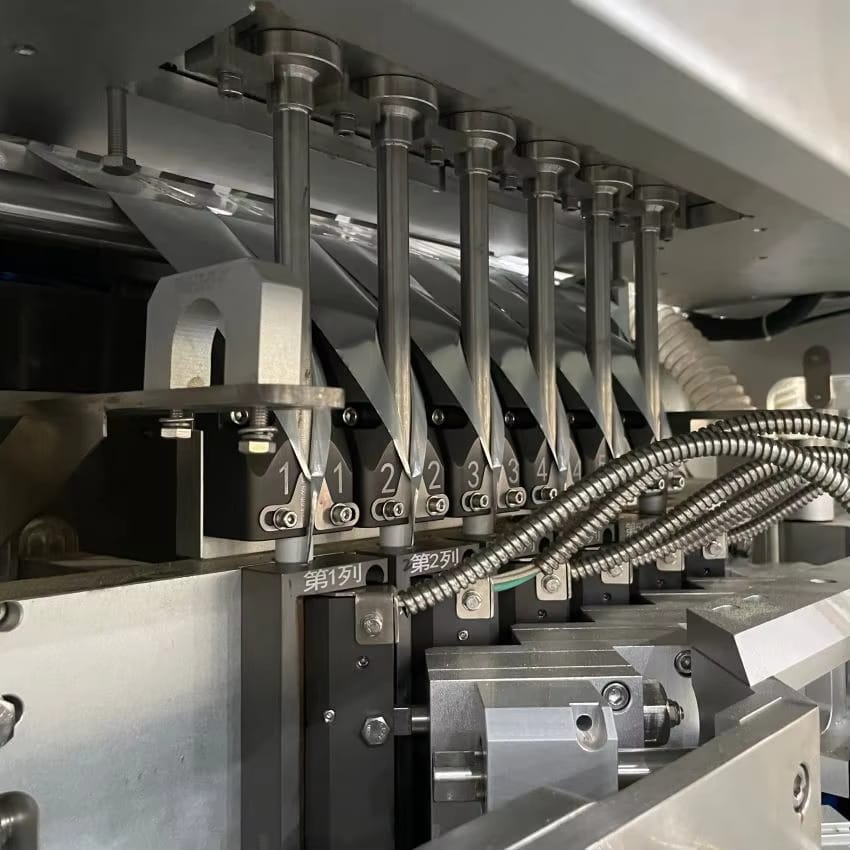
ความเร็วและประสิทธิภาพของบรรจุภัณฑ์
เมื่อพูดถึงความเร็วในการบรรจุ เครื่องบรรจุซองมักจะมีข้อได้เปรียบ เครื่องบรรจุซองแบบหลายช่องทางสามารถบรรจุสินค้าได้หลายหน่วยพร้อมกัน ทำให้มีประสิทธิภาพสูงสำหรับการผลิตปริมาณมาก เครื่องบรรจุซองยังสามารถบรรจุสินค้าได้อย่างรวดเร็ว แต่ความเร็วอาจแตกต่างกันไป ขึ้นอยู่กับประเภทของผลิตภัณฑ์และวัสดุบรรจุภัณฑ์ที่ใช้
สำหรับผู้ผลิตที่ต้องการเพิ่มประสิทธิภาพการผลิต เครื่องบรรจุแบบแท่งเป็นตัวเลือกที่ดีเยี่ยมสำหรับผลิตภัณฑ์ที่สามารถบรรจุได้ในปริมาณน้อยและแคบ ในทางกลับกัน เครื่องบรรจุแบบซองอาจเหมาะสมกว่าสำหรับผลิตภัณฑ์ที่ต้องการอัตราการบรรจุที่ช้ากว่าหรือการตวงที่แม่นยำกว่า
ความสะดวกและความน่าดึงดูดใจของผู้บริโภค
ความสะดวกสบายของผู้บริโภคมีความสำคัญต่อความสำเร็จของผลิตภัณฑ์ บรรจุภัณฑ์แบบแท่งได้รับความนิยมเนื่องจากพกพาสะดวกและใช้งานง่าย สามารถฉีกเปิดได้ง่าย จึงเหมาะสำหรับการบริโภคระหว่างเดินทาง ผลิตภัณฑ์เช่น กาแฟสำเร็จรูป น้ำตาล หรืออาหารเสริมได้รับประโยชน์จากรูปแบบที่สะดวกนี้
ซองเปิดง่ายแต่มีพื้นที่สำหรับติดแบรนด์และให้คำแนะนำมากกว่า ทำให้ซองเป็นตัวเลือกที่ดีสำหรับผลิตภัณฑ์ที่ต้องการข้อมูลการใช้งานโดยละเอียดหรือข้อความทางการตลาด นอกจากนี้ ซองยังสามารถบรรจุผลิตภัณฑ์ได้ในปริมาณมาก ซึ่งอาจดึงดูดใจสำหรับผลิตภัณฑ์ในครัวเรือน เช่น แชมพูหรือเครื่องปรุงรสอาหาร
ผลกระทบต่อสิ่งแวดล้อม
ความยั่งยืนเป็นข้อกังวลที่เพิ่มมากขึ้นในอุตสาหกรรมบรรจุภัณฑ์ บรรจุภัณฑ์แบบแท่งมักก่อให้เกิดขยะจากบรรจุภัณฑ์น้อยกว่าเนื่องจากใช้วัสดุเพียงเล็กน้อย อย่างไรก็ตาม ขนาดที่เล็กลงอาจส่งผลให้เกิดขยะมากขึ้นหากต้องใช้บรรจุภัณฑ์จำนวนมากขึ้น
แม้ว่าซองพลาสติกจะใช้ปริมาณวัสดุต่อหน่วยมากขึ้น แต่ก็สามารถลดปริมาณขยะโดยรวมได้ หากต้องใช้หน่วยน้อยลงในการบรรจุผลิตภัณฑ์ปริมาณเท่ากัน นอกจากนี้ บริษัทหลายแห่งกำลังพิจารณาใช้วัสดุที่เป็นมิตรต่อสิ่งแวดล้อมสำหรับบรรจุภัณฑ์ซองพลาสติก เช่น ฟิล์มที่ย่อยสลายได้ทางชีวภาพและวัสดุรีไซเคิล
คุณรู้หรือไม่? คาดว่าตลาดบรรจุภัณฑ์แบบยืดหยุ่นจะเติบโตมากกว่า 4% ต่อปี โดยโซลูชันบรรจุภัณฑ์ที่ยั่งยืนกลายเป็นกระแสหลัก ปัจจุบัน แบรนด์ต่างๆ จำนวนมากเลือกใช้ซองบรรจุภัณฑ์ที่ย่อยสลายได้และรีไซเคิลได้เพื่อลดผลกระทบต่อสิ่งแวดล้อม

คำถามที่พบบ่อย
1. ซองแบบแท่งใช้ใส่ของเหลวได้ไหม?
บรรจุภัณฑ์แบบแท่งมักใช้สำหรับผงและเม็ด แต่สามารถบรรจุผลิตภัณฑ์ของเหลวได้ในปริมาณเล็กน้อย อย่างไรก็ตาม ซองแบบซองเหมาะสำหรับบรรจุของเหลวในปริมาณมาก
2. ซองบรรจุคุ้มค่ากว่าแบบซองหรือไม่?
ใช่แล้ว ซองมักจะคุ้มค่ากว่าเมื่อบรรจุในปริมาณมาก เนื่องจากใช้วัสดุและกระบวนการผลิตที่เรียบง่ายกว่า
3. บรรจุภัณฑ์แบบใดดีกว่าสำหรับผลิตภัณฑ์ยา?
บรรจุภัณฑ์ทั้งสองประเภทใช้ในอุตสาหกรรมยา แต่บรรจุภัณฑ์แบบแท่งเป็นที่นิยมสำหรับอาหารเสริมชนิดผง ในขณะที่ซองแบบซองเหมาะสำหรับเม็ดยา แคปซูล และยาของเหลวมากกว่า
4. บรรจุภัณฑ์แบบแท่งยั่งยืนกว่าบรรจุภัณฑ์แบบซองหรือไม่?
บรรจุภัณฑ์แบบแท่งอาจใช้ปริมาณวัสดุต่อหน่วยน้อยกว่า ทำให้บรรจุภัณฑ์ปริมาณน้อยมีความยั่งยืนมากขึ้น อย่างไรก็ตาม มีซองแบบเป็นมิตรต่อสิ่งแวดล้อมให้เลือกใช้ซึ่งสามารถช่วยลดผลกระทบต่อสิ่งแวดล้อมได้
5. ซองบรรจุสามารถรองรับองค์ประกอบการสร้างแบรนด์เพิ่มเติมได้หรือไม่
ใช่ พื้นผิวซองที่ใหญ่กว่าทำให้สามารถแสดงแบรนด์และข้อมูลผลิตภัณฑ์ได้ครอบคลุมมากขึ้น จึงเหมาะอย่างยิ่งสำหรับผลิตภัณฑ์ที่ต้องการคำแนะนำโดยละเอียดหรือเนื้อหาการตลาด
สรุป
การเลือกใช้ระหว่างซองแบบแท่งและซองแบบซองขึ้นอยู่กับความต้องการด้านบรรจุภัณฑ์เฉพาะของคุณและลักษณะของผลิตภัณฑ์ของคุณ ซองแบบแท่งเหมาะสำหรับพกพาและรับประทานครั้งเดียว เช่น กาแฟสำเร็จรูปหรืออาหารเสริม ในขณะที่ซองแบบซองเหมาะสำหรับปริมาณที่มากขึ้น ของเหลว หรือผลิตภัณฑ์ เช่น เครื่องสำอาง เครื่องปรุงรส.ดังนั้นหากคุณต้องการเครื่องบรรจุซองที่ดีที่สุด โปรดติดต่อ ลินตี้โก้ แพ็ค ตอนนี้!



